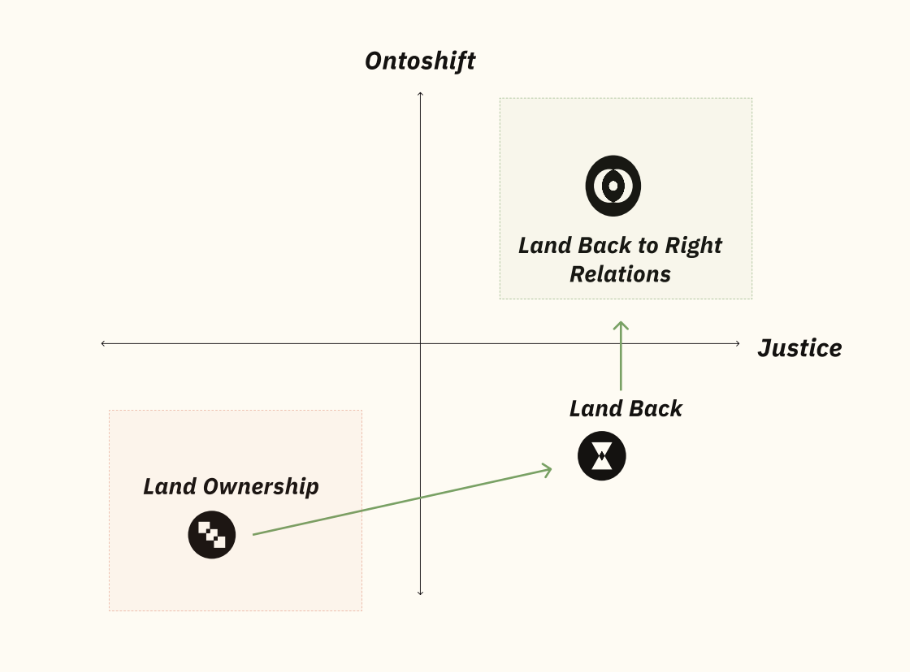Deep Dive: Narative Vectors
Movement within the narrative space
Narrative vectors are a tool that enable us to further map the current narrative space, by identifying specific pathways across the narrative space. Narrative vectors help us understand how discursive patterns – the way ideas are framed, justified, and emotionally charged – shift position, and gain or lose traction, within the broader narrative ecosystem.
Narrative Communities involved: Often vectors move between Narrative Communities or clusters of Narrative Communities. What is moving is not the narrative communities per se, but the volume of attention for a specific narrative structure.
Direction of movement: A vector may move clearly along one axis (e.g. the justice or ontology axis) or shift across both at once. A vector’s movement may reflect the desired direction of narrative evolution (see the TOT example below). Or, it may not reflect the desired direction of narrative evolution: it might move downwards on the mapping graph (from top right to bottom left). For example, a narrative about land rights initiated by Indigenous land defenders, might then be co-opted by a government agency, and reshaped by conservative media.
Beyond the Narrative Communities involved and the direction of movement within the narrative space, a narrative vector includes two other elements:
Speed of movement (or velocity) describes how fast a vector is moving across the narrative space. A vector might take its time to move – e.g. traveling more slowly through ritual, testimony, or community storytelling. A fast vector might appear as a viral moment online.
Medium/Mechanism: This is about in what form a vector propagates across narrative space. We see vector movement through mediums/mechanisms (e.g. viral memes, protests, hashtags, etc that are renegotiating meaning). Mediums affect reach, tone, and accessibility.
For example in the TOT example – the mapping below illustrates two vectors:

Vector 1:
- Narrative Communities: From “land ownership” narrative communities to “land back” narrative communities.
- Direction of movement: The vector is moving in the desired direction of narrative evolution along the justice axis – from the hegemonic narrative of “private land ownership” (injustice side of the axis) progressing through “land back” narratives (justice side of the axis).
- Speed of movement: Shifts are accelerated during moments of public reckoning (e.g. court rulings; protests; Indigenous led movements like Standing Rock); alongside periods of slower movement (e.g. in school curriculum change; legal advocacy etc).
- Medium/mechanism: Direct action (protests; land occupations); Public storytelling (testimonies; documentaries etc); Hashtags (e.g. #landback)
Vector 2:
- Narrative Communities: From “land back” narrative communities to “land back to right relations” communities
- Direction of movement: The vector is moving in the desired direction of narrative evolution along the ontology axis – from the justice narrative of “land back” along the ontological axis towards “right relations” narrative communities (land being seen more merely as a territory to possess or return, but as a living relational entity that requires ongoing stewardship).
- Speed of movement: Slow and deeper change (through longer-term relational and embodied practices like ceremonies, language revival, shifts in kinship models).
- Medium/mechanism: Ceremonies; oral histories; land stewardship programmes.
Footnotes
- Definition: Narrative Communities are actors that are engaged in a similar conversation using similar narratives over a sustained period of time.
- This focus on medium/mechanism, is grounded in Media Theory, e.g. scholars such as Niklas Luhmann; Guy Debord; Jean Baudrillardl; Marshall McLuhan.